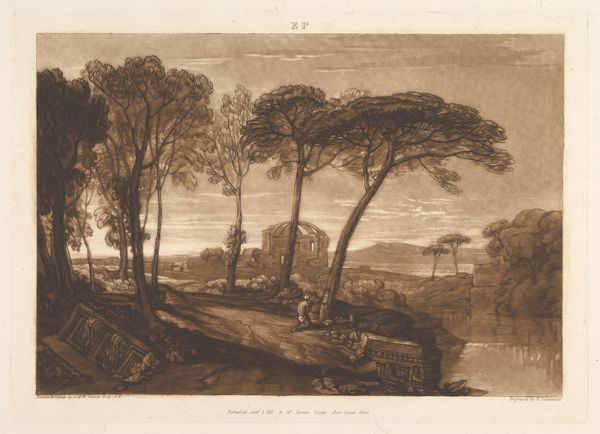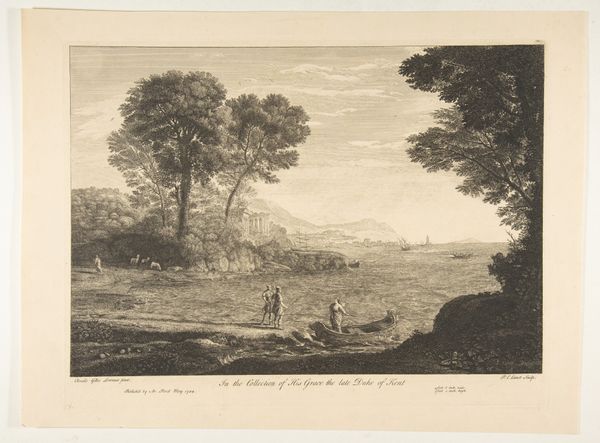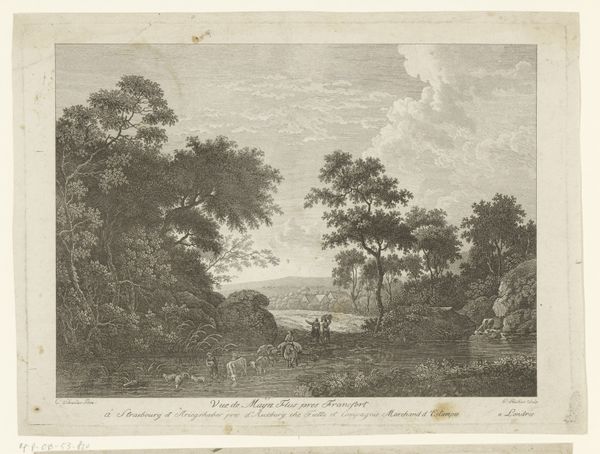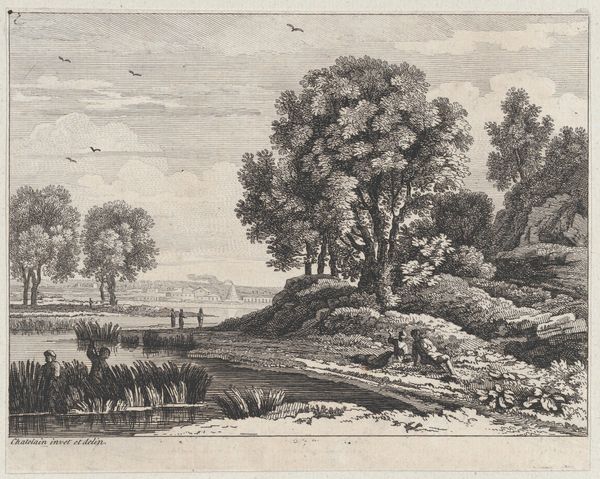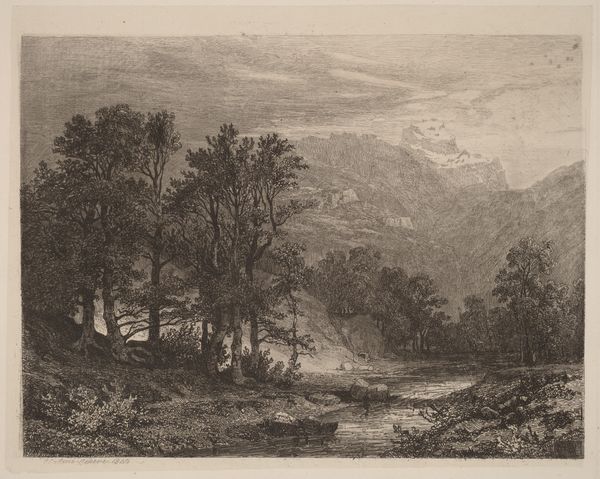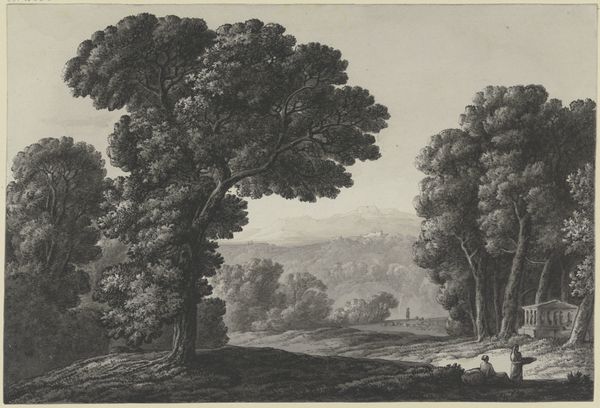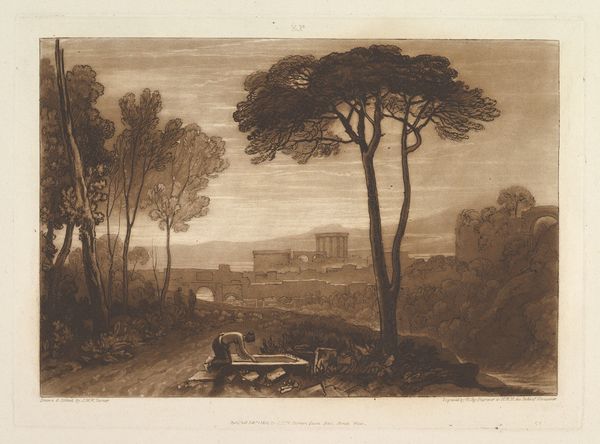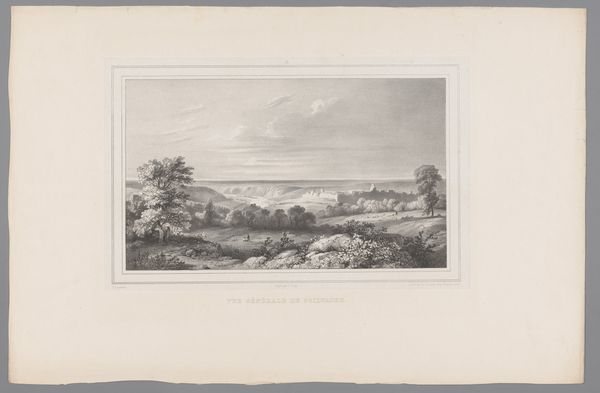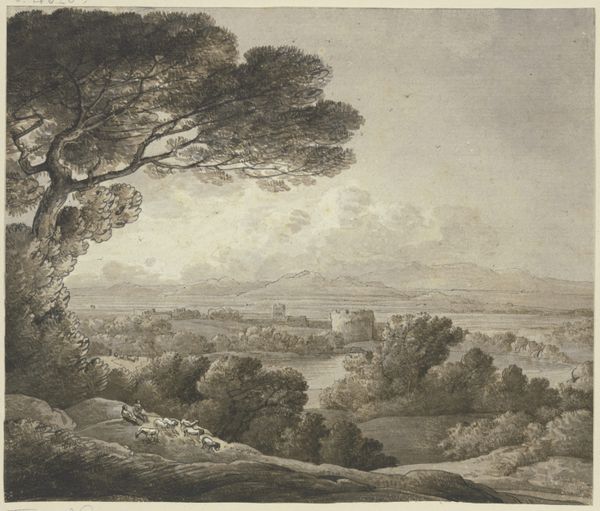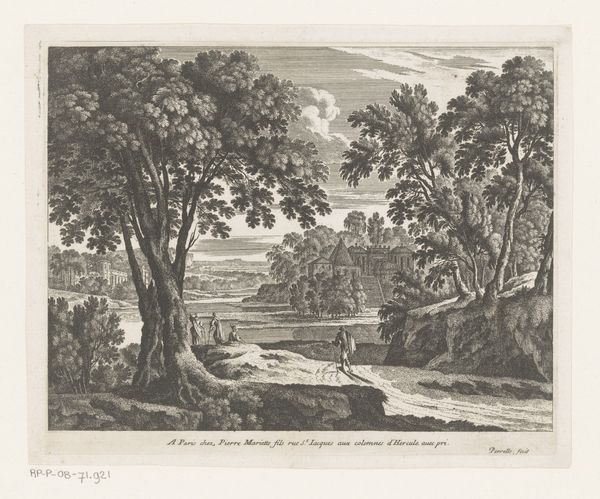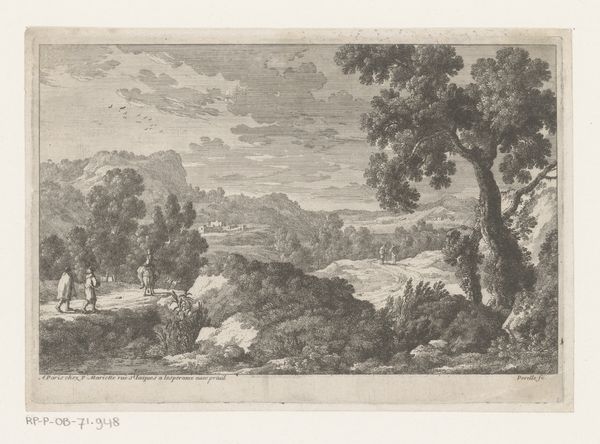
Junction of Severn and Wye (Liber Studiorum, part VI, plate 28) 1811
0:00
0:00
drawing, print, etching
#
drawing
# print
#
etching
#
landscape
#
romanticism
Dimensions: plate: 7 1/8 x 10 7/16 in. (18.1 x 26.5 cm) sheet: 8 x 11 1/2 in. (20.3 x 29.2 cm)
Copyright: Public Domain
Joseph Mallord William Turner created this etching called 'Junction of Severn and Wye' as part of his 'Liber Studiorum.' Note the trees framing the scene; they are not mere decoration. Throughout art history, trees have symbolized growth, connection to nature, and the cyclical nature of life. In ancient pagan traditions, groves were sacred spaces, and individual trees often embodied specific deities or spirits. Consider the 'Tree of Life,' a motif found across cultures from Norse mythology's Yggdrasil to the biblical Garden of Eden. In Turner’s image, the trees evoke this deep-seated connection to the natural world and hint at the sublime power of nature, a recurring theme in Romantic art. This recalls how the Romantics turned to nature as a refuge from the burgeoning industrial revolution. Even today, we subconsciously recognize the emotional power of trees—a park provides solace, a forest inspires awe. This echoes the work of Renaissance masters like Leonardo da Vinci, who placed similar emphasis on landscapes.
Comments
No comments
Be the first to comment and join the conversation on the ultimate creative platform.
